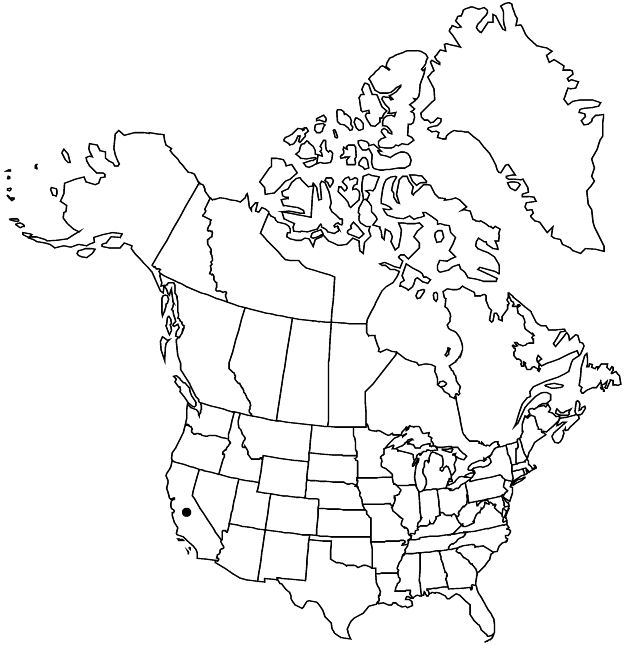Difference between revisions of "Cercocarpus betuloides var. blancheae"
Phytologia 4: 308. 1953.
FNA>Volume Importer |
FNA>Volume Importer |
||
| Line 15: | Line 15: | ||
|name=C. alnifolius | |name=C. alnifolius | ||
|authority=Rydberg | |authority=Rydberg | ||
| − | }}{{Treatment/ID/Synonym | + | }} {{Treatment/ID/Synonym |
|name=C. betuloides subsp. blancheae | |name=C. betuloides subsp. blancheae | ||
|authority=(C. K. Schneider) Thorne | |authority=(C. K. Schneider) Thorne | ||
| − | }}{{Treatment/ID/Synonym | + | }} {{Treatment/ID/Synonym |
|name=C. betuloides var. multiflorus | |name=C. betuloides var. multiflorus | ||
|authority=Jepson | |authority=Jepson | ||
| − | }}{{Treatment/ID/Synonym | + | }} {{Treatment/ID/Synonym |
|name=C. montanus var. blancheae | |name=C. montanus var. blancheae | ||
|authority=(C. K. Schneider) F. L. Martin | |authority=(C. K. Schneider) F. L. Martin | ||
| Line 39: | Line 39: | ||
|elevation=(10–)100–800 m | |elevation=(10–)100–800 m | ||
|distribution=Calif.;Mexico (Baja California). | |distribution=Calif.;Mexico (Baja California). | ||
| − | |discussion=<p>Variety blancheae grows primarily in chaparral in coastal southern California from San Luis Obispo to San Diego counties (rare in northern Baja California, Mexico) and on adjacent Santa Catalina, Santa Cruz (where frequent), and Santa Rosa (rare) islands. This treatment combines the coastal mainland and insular plants. Both tend to have multiple flowers on each short shoot and coiled hairs on young stems, leaves, hypanthia, and pedicels. This coiled hair type is consistent in mainland populations; some insular plants are sericeous throughout. Insular plants typically have larger leaves than mainland plants, except in very dry areas, and conversely, mainland coastal plants previously designated as var. betuloides have smaller leaves except in protected and shaded habitats. Recognition of these two as distinct, at any rank, is poorly supported, and the authors consider them phases of a single taxon. Plants of the more arid slopes in transmontane southern and central California are more sericeous throughout and have fewer flowers per short shoot (see var. betuloides). Intermediates occur in zones of contact.</p> | + | |discussion=<p>Variety blancheae grows primarily in chaparral in coastal southern California from San Luis Obispo to San Diego counties (rare in northern Baja California, Mexico) and on adjacent Santa Catalina, Santa Cruz (where frequent), and Santa <i>Rosa</i> (rare) islands. This treatment combines the coastal mainland and insular plants. Both tend to have multiple flowers on each short shoot and coiled hairs on young stems, leaves, hypanthia, and pedicels. This coiled hair type is consistent in mainland populations; some insular plants are sericeous throughout. Insular plants typically have larger leaves than mainland plants, except in very dry areas, and conversely, mainland coastal plants previously designated as <i></i>var.<i> betuloides</i> have smaller leaves except in protected and shaded habitats. Recognition of these two as distinct, at any rank, is poorly supported, and the authors consider them phases of a single taxon. Plants of the more arid slopes in transmontane southern and central California are more sericeous throughout and have fewer flowers per short shoot (see <i></i>var.<i> betuloides</i>). Intermediates occur in zones of contact.</p> |
|tables= | |tables= | ||
|references= | |references= | ||
| Line 63: | Line 63: | ||
|publication year=1953 | |publication year=1953 | ||
|special status= | |special status= | ||
| − | |source xml=https://jpend@bitbucket.org/aafc-mbb/fna-data-curation.git/src/ | + | |source xml=https://jpend@bitbucket.org/aafc-mbb/fna-data-curation.git/src/8f726806613d60c220dc4493de13607dd3150896/coarse_grained_fna_xml/V9/V9_548.xml |
|subfamily=Rosaceae subfam. Dryadoideae | |subfamily=Rosaceae subfam. Dryadoideae | ||
|tribe=Rosaceae tribe Dryadeae | |tribe=Rosaceae tribe Dryadeae | ||
Revision as of 18:17, 18 September 2019
Shrubs or trees, 10–50(–80) dm. Young stems with tightly coiled hairs. Leaves: stipules (3–)4–6(–10) mm; blade oblong-obovate or -elliptic, obovate, ovate, or suborbiculate, (8–)12–50(–78) × (4–)8–35(–64) mm, subcoriaceous to coriaceous, margins serrate or dentate or crenate in distal 1/5–3/4, abaxial veins with coiled, 1/2 coiled, or coiled-wavy hairs to 1 mm (or some appressed-sericeous hairs on off-coastal island plants), areoles canescent or glabrous, adaxial surface sparsely similarly hairy, glabrescent. Flowers (1–)3–8(–18) per short shoot; hypanthial tubes with coiled hairs (or some sericeous hairs on island plants). Achenes 8–11(–13) × 1.8–2.5(–2.9) mm; fruiting pedicels (1.5–)3–11(–14) mm; hypanthial tubes (6–)7–13(–16) mm; pedicel/tube ratio (20–)35–90(–120)%; fruit awns 5.3–7.5(–9.2) cm.
Phenology: Flowering late Feb–Apr.
Habitat: Coastal chaparral
Elevation: (10–)100–800 m
Distribution

Calif., Mexico (Baja California).
Discussion
Variety blancheae grows primarily in chaparral in coastal southern California from San Luis Obispo to San Diego counties (rare in northern Baja California, Mexico) and on adjacent Santa Catalina, Santa Cruz (where frequent), and Santa Rosa (rare) islands. This treatment combines the coastal mainland and insular plants. Both tend to have multiple flowers on each short shoot and coiled hairs on young stems, leaves, hypanthia, and pedicels. This coiled hair type is consistent in mainland populations; some insular plants are sericeous throughout. Insular plants typically have larger leaves than mainland plants, except in very dry areas, and conversely, mainland coastal plants previously designated as var. betuloides have smaller leaves except in protected and shaded habitats. Recognition of these two as distinct, at any rank, is poorly supported, and the authors consider them phases of a single taxon. Plants of the more arid slopes in transmontane southern and central California are more sericeous throughout and have fewer flowers per short shoot (see var. betuloides). Intermediates occur in zones of contact.
Selected References
None.